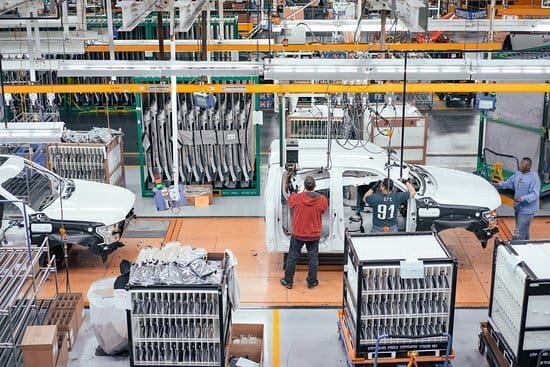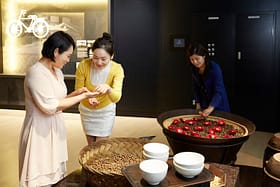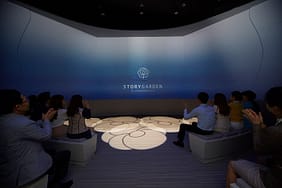- News
- Employee Experience and The Changing Role of Corporate Headquarters
Employee Experience and The Changing Role of Corporate Headquarters
March 2021
Written by Maya Guice
A few months ago, I wrote a blog about how human experience design, in the context of software development and digital products, does almost nothing to improve the human experience. Yes, it makes scrolling more intuitive, and yes, I can make a purchase in two minutes instead of three, but no, I don’t feel more hopeful, loved, or empowered. In-person experiences and human connection, on the other hand, enhance our humanity and give us a good reason to feel optimistic about the world.
This got me thinking about how the experience business intersects with another trending term: Employee Experience or “the impression you leave as an organization on your people—before, during and after their journey at your company.”
You are who you hire
The benefits of an excellent employee experience are many, but in terms most business leaders can appreciate: Companies with highly engaged and happy teams outperform their peers by 147% in earnings per share. Likewise, unsatisfied and actively disengaged employees cost the U.S. between $450 billion to $550 billion per year. And that doesn’t even begin to capture the negative externalities of people spending most of their day feeling miserable at work. Their health, relationships, and environment all suffer.
Recruitment is an important building block for a healthy corporate culture and positive employee experience. When considering a new employee at BRC, for instance, we’re just as concerned about the quality of character as the quality of skills. In the words of Simon Sinek: “You don’t hire for skills, you hire for attitude. You can always teach skills. […] People are either motivated or they are not.”
First impressions are lasting
So how might a company not only attract but identify the best candidates, the crème de la crème? One way is for the company to manifest its values, culture, and beliefs. A strategy, I should caveat, that only works if it comes from an authentic place.
The pandemic and new trends towards remote work have caused companies to rethink the purpose of their otherwise underutilized corporate headquarters. What opportunities do companies have to use this space to showcase its culture, values, history, and provide a sense of what it might be like to work on the team? Not surprisingly, we’ve seen an uptick in companies and institutions investing in their visitor centers, tours, brand homes, and corporate archives.

One great example of this is the innovation lab—or accelerator, incubator, research hub. Everyone from retailers to airlines to Starbucks now has a dedicated space for design thinking, experimentation, and the all-important sticky note on their corporate campus. What’s the purpose of these spaces? To disrupt, iterate and explore? Or is it what Steve Blank calls “innovation theater”? Considering a report from Capgemini that quotes one expert as saying 80-90% of these centers fail, it’s safe to assume the latter.
I would argue that the real value of these spaces isn’t the potential for new, disruptive ideas, but to attract the best talent. The people who might not be the ‘smartest’ in the room, but people who share the company’s values and core beliefs; the people that not only align with but add to the company culture—”people like us.” These are the people who will make sure that your values are more than theater. They will make an active, concerted effort to maintain the culture that attracted them in the first place. These are people who show genuine enthusiasm for your culture and values and champion them.
Show don’t tell
A more specific example is The Henry Ford’s (THF) brand home, the Ford Rouge Factory Tour in Dearborn, Michigan. Although THF has deep ties and a long-standing relationship with Ford Motor Company, THF is an independent nonprofit. In a recent webinar hosted by BRC and AnyRoad, Cynthia Jones, General Manager of Innovation Experiences, said: “It was pretty revolutionary to say to people who build trucks all day, ‘Hey, I want to bring thousands of folks through to watch you work.’ We wanted to help them understand that they’re amazing at what they do and they’re so amazing that people want to pay money to come on a tour to watch them work.”
The Ford Rouge Factory Tour successfully immerses potential recruits in the day-to-day experience of a Ford Motor Company employee. It’s one thing to hear that employees are enthusiastic; it’s quite another to see people actively taking pride in their work—who wouldn’t be inspired to join that team?!

What’s more, it’s a lot easier to measure conversion—the number of recruits who go through the tour and take the job—than it is to measure qualitative metrics like visitor sentiment and employee morale. Measured this way, success is a lot more tangible.
Immersive Onboarding
Beyond the recruitment process, onboarding is another important opportunity for companies to immerse new recruits in their brand story, values, and corporate culture. More than paperwork, a proper onboarding experience is critical to employee retention, productivity, and morale.
Take AMOREPACIFIC , which was ranked one of the World’s Best Employers by Forbes’ in 2020. Story Garden is AMOREPACIFIC’s 10,000 sq ft corporate visitor tour in Osan, South Korea that places new recruits at the center of the AMOREPACIFIC story. In recognition of his incredible Grandmother who founded AMOREPACIFIC in her kitchen, the company’s Chairman, Suh Kyung-bae, wanted an experience that would not only celebrate the people who work there, but that would inspire and empower the women around the world who use AMOREPACIFIC products every day.


New employees who visit Story Garden pass through botanical gardens before entering the building, which contains eight galleries—five of which speak to the company’s core values—and two immersive theaters. The experience, which is but one stop on a multi-day onboarding journey, imbues visitors in the company’s history, and commitment to sustainable sourcing, technological innovation, and a holistic vision of beauty.
There’s something remarkable about the manifestation of a company’s culture and history. Done right, corporate visitor centers, tours, brand homes, and corporate archives all contribute to your prospective recruit and new employee’s deep appreciation for the company and helps differentiate your place of work from the rest. Perhaps a little theater isn’t such a bad thing after all.
